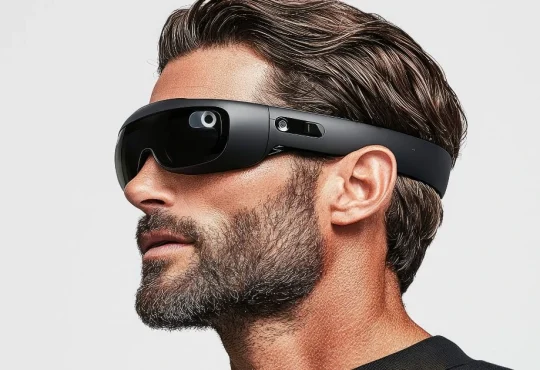Cell phones became mainstream in the new millennium’s first decade, sparking intense competition among companies to create must-have accessories. Their avant-garde designs quickly intertwined with pop culture—Paris Hilton is often remembered clutching one of her dogs and a cell phone. Despite the popularity of smartphones today, there’s a nostalgic trend to return to the flip and slider phones of the early 2000s. Embracing this blast from the past, here are eight of the most iconic cell phone designs from 2000 to 2009.
Early 2000s Cellphones Guide: Relive the 8 Best Designs!
Nokia 3310
Debuting in 2000 and retiring in 2005, the Nokia 3310 sold 126 million units worldwide, solidifying its status as one of the most successful cell phones ever. The Finnish company Nokia chose a simple, streamlined design, reflecting the essence of Scandinavian minimalism. Built to last, the Nokia 3310 became renowned for its exceptional durability, often praised for its resilience against drops and rough handling. Its user-friendly interface, long battery life, and iconic game Snake made it a favorite among consumers, contributing to its widespread popularity and cultural impact during the early 2000s.
In 2017, Nokia resurrected the 3310 with a modernized design, catering to the growing nostalgia for classic cell phones. This updated version retained the beloved features of the original while introducing contemporary touches, such as a more prominent color screen and a slimmer profile. Available in four vibrant colors, the new 3310 maintained the brand’s commitment to simplicity and durability. One of the standout features of the revamped model is its impressive battery life, lasting an entire month on standby mode. This blend of nostalgia and modern functionality made the new Nokia 3310 a hit among longtime fans and a new generation of users seeking a reliable, straightforward mobile phone.
Danger Hiptop/T-Mobile Sidekick
Most teens and young adults in the 2000s will remember the Sidekick, one of the “It” phones of the decade, renowned for its unique design and functionality. Its most notable feature was the QWERTY keyboard, revealed by a swiveling screen that flipped open with a satisfying snap. This design made texting and emailing much easier, attracting a large following among the youth. While the Sidekick wasn’t the first cell phone with a full keyboard—that honor goes to the Nokia Communicator 9000, launched in 1996, six years before the Sidekick—it was undoubtedly one of the most popular. The phone’s user-friendly interface and robust messaging capabilities set it apart when mobile internet access began taking off.
Originally designed and produced by Danger, Inc., the phone was initially named Hiptop. However, after a rebranding by T-Mobile, it became widely known as the Sidekick, securing its place as a cultural icon of the early 2000s. Celebrities like Paris Hilton and Lindsay Lohan were often seen flaunting their Sidekicks, further cementing their status as a must-have accessory. The device was more than just a phone; it symbolized the emerging digital lifestyle, blending style with functionality. Despite the eventual decline of the Sidekick as smartphones took over, its influence remains, remembered fondly by those who experienced the early days of mobile communication and social connectivity.
Motorola RAZR
The first cell phone to achieve viral status was the Motorola RAZR, which hit the market in 2004. According to Paul Pierce, executive director at Motorola Mobility and a member of the original RAZR team, the company set out in 2003 to create a device that could easily fit into a pocket. This focus on thinness led to halving the device’s thickness and completely rethinking the phone’s design and architecture. The result was the iconic RAZR, featuring an ultrathin backlit keypad, a distinguished chin, and a metallic finish. The brand expanded its appeal by offering the phone in multiple colors, turning it into a fashion accessory, and even partnering with Dolce & Gabbana on a limited edition model.
The RAZR’s sleek design and fashionable appeal made it more than just a mobile device; it became a status symbol of the mid-2000s. In a nod to its enduring legacy, Motorola recently released a new “foldable” model, incorporating a bendable touchscreen within a clamshell design. This modern version pays homage to the original while embracing contemporary technology, demonstrating how the RAZR continues to influence the mobile phone market even years after its initial release.
Sony Ericsson W800i
Introduced in 2005, the Sony Ericsson W800i may not have been the most popular cell phone of the decade, but it was a groundbreaking device, marking a significant step in the evolution of mobile technology. Thanks to a collaboration with Walkman, the iconic portable media player, it was one of the first phones to integrate music playback capabilities. This partnership resulted in a phone that could double as a music player, featuring 2 GB of external memory and a battery life of up to 30 hours for continuous music playback. This innovation set the stage for the future convergence of mobile phones and multimedia devices.
The W800i also stood out with its distinctive orange-and-white exterior, making it easily recognizable among its peers. Its stylish and functional design appealed to a younger demographic that valued aesthetics and utility. Although it did not achieve the same level of commercial success as some of its contemporaries, the Sony Ericsson W800i played a crucial role in shaping the future of mobile phones, demonstrating that a phone could be more than just a communication device—it could also be a portable entertainment hub. This concept paved the way for future mobile technology advancements, influencing subsequent smartphones’ design and functionality.
LG Chocolate
In 2006, following the Sony Ericsson W800i, LG introduced its own MP3 player-phone hybrid, the LG Chocolate. This device marked a significant step in the fusion of mobile phones and portable music players. Much like the Motorola RAZR, the LG Chocolate was offered in various colors, adding a fashionable twist to its functionality. Available hues included Dark Chocolate (black), Mint Chocolate (pale green), White Chocolate (white), Strawberry Chocolate (pink), and Cherry Chocolate (red). These options let users personalize their phones, making them gadgets and stylish accessories.
The design of the LG Chocolate was both sleek and innovative. When closed, the phone resembled a modern music player, featuring a screen and a circular control panel. However, the screen slid up to reveal a traditional numeric keypad, seamlessly blending its dual functions as a phone and a music player. This design catered to the growing consumer desire for multifunctional devices, foreshadowing the trend towards integrating more capabilities into mobile phones. The LG Chocolate thus played a pivotal role in the evolution of mobile technology, combining aesthetic appeal with practical features in a way that appealed to the mid-2000s market.
BlackBerry Pearl
In the 2000s, BlackBerry transitioned from being a phone primarily for businesspeople to a device embraced by the general public, thanks mainly to the launch of the BlackBerry Pearl in 2006. The Pearl featured a sleeker profile compared to its bulkier predecessors, resembling old PalmPilots more than modern cell phones. Its design included a modified QWERTY keyboard, where some neighboring letters shared keys, making it more compact and user-friendly. Additionally, the Pearl was the first BlackBerry to incorporate a camera and music player capabilities, broadening its appeal beyond email and business functions.
The most revolutionary aspect of the Pearl’s design was the introduction of the trackball, a feature that became a hallmark of the BlackBerry brand. This new navigation method made it easier to scroll through menus and messages, enhancing the overall user experience. The BlackBerry Pearl’s blend of style, functionality, and innovative features marked a significant shift in the company’s strategy, positioning it as a serious competitor in the consumer mobile phone market. Its success helped pave the way for future BlackBerry models that continued to balance professional utility with broader consumer appeal.
Apple iPhone
Undoubtedly the most revolutionary phone of the early 2000s, the Apple iPhone shattered expectations with its groundbreaking design and technology. Visually, it was a marvel—a sleek, rectangular gem crafted from metal and glass, boasting a minimalist aesthetic that set it apart from its predecessors. The iPhone radiated sophistication and elegance, sporting only a single button and a slender profile. However, its true innovation lay in its technological design, particularly the introduction of the touchscreen.
During the 2007 keynote where Steve Jobs unveiled the iPhone to the world, he emphasized the device’s revolutionary interface, stating, “We’re going to use the best-pointing device in the world. We’re going to use our fingers. We’re going to interact with this using our fingers.” Despite not being the initial touchscreen phone, a title held by IBM Simon in 1992, it showcased its most advanced touchscreen technology. This visionary approach to user interaction transformed the smartphone landscape, paving the way for the minimalist, screen-oriented design that dominates today’s smartphone market.
HTC Dream/T-Mobile G1
With Apple’s iPhone and iOS launch, the race was on for other manufacturers to develop their smartphone versions. In 2008, the HTC Dream, also known as the T-Mobile G1, emerged as the first phone to utilize Android, the primary competitor to Apple’s operating system, iOS. Developed by a consortium of developers, including Google, Android introduced a new era of smartphone technology. The HTC Dream’s design differed significantly from the iPhone, featuring an analog QWERTY keyboard beneath a sliding touchscreen, offering users a physical input option alongside touchscreen functionality.
While the iPhone set the standard for touchscreen smartphones, the HTC Dream/T-Mobile G1 introduced consumers to the versatility of Android and the concept of a customizable mobile experience. Its combination of a physical keyboard and touchscreen interface gave users greater flexibility and choice in interacting with their devices. This pioneering device laid the foundation for the diverse array of Android smartphones that followed, offering consumers a compelling alternative in the rapidly evolving smartphone market.
Conclusion:
Before the minimalist iPhone design took over, the cell phone market was dominated by various unique and stylish models considered must-have accessories. Among these, the Motorola RAZR stood out with its sleek, ultra-thin profile and metallic finish, making it a fashion statement. With its distinctive swivel screen and full QWERTY keyboard, the Sidekick became a favorite for messaging and social media enthusiasts. Meanwhile, the Blackberry was highly prized in the business world for its robust email capabilities and secure messaging. These iconic designs offered distinct features that catered to different user needs and preferences, marking a vibrant and diverse era in mobile phone history.





